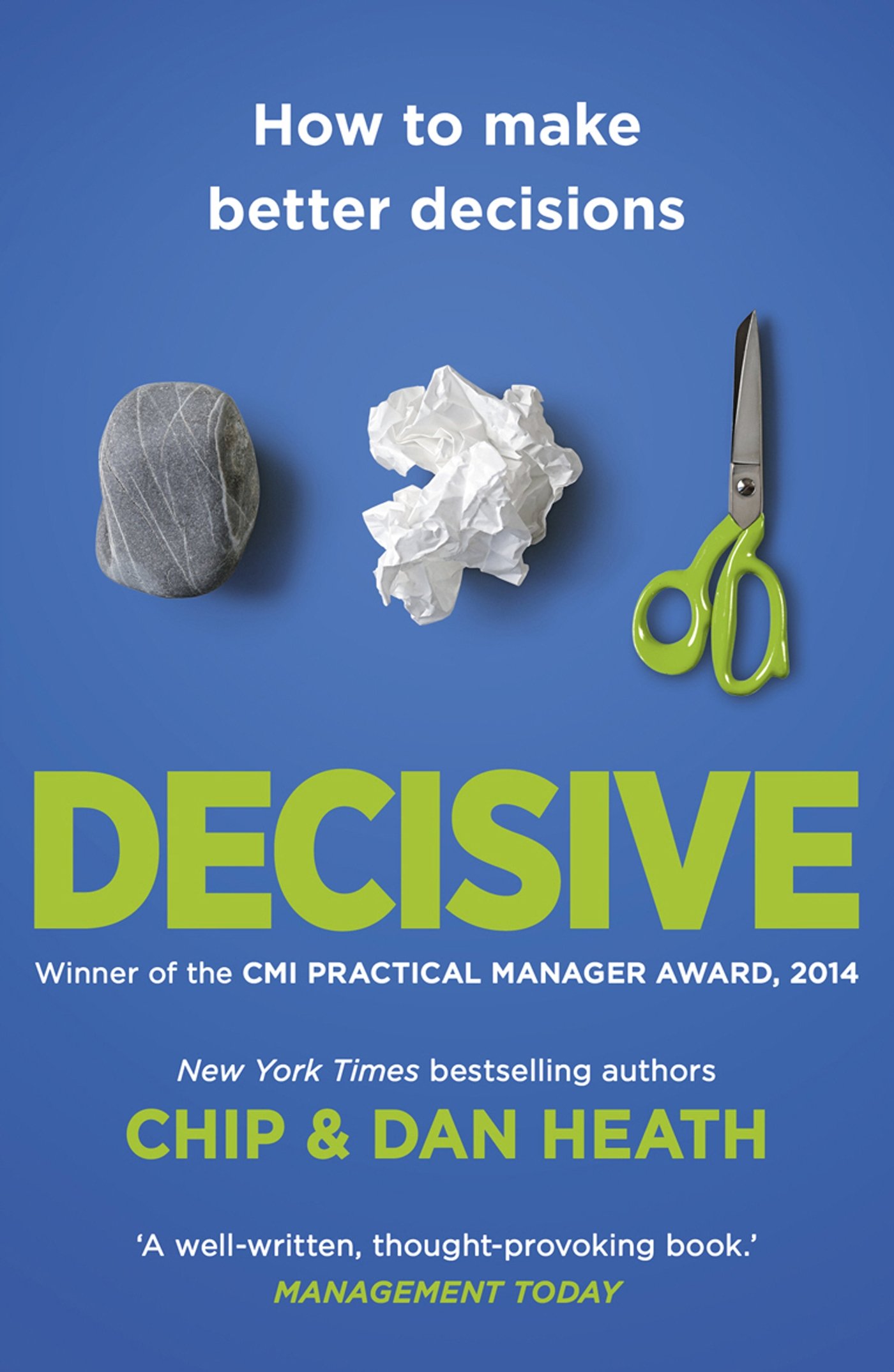Like all teachers, I get asked for advice from time to time. Should I apply to X university? I’m having difficulty choosing between politics and geography A level, can you help? From the tearful student not sure how to cope with the unpleasant comments she is receiving via Instagram to the colleague wondering whether or how they should do or say a particular thing, my response has tended to focus on the content on the problem. What is the situation? How comfortable would you feel dong X or Y? What do you want to achieve? Whilst I do not think that Chip and Dan Heath would consider this the worst possible approach, their book helped me to see that I should be taking a much broader and more systematic approach both when helping others make decisions, and when making them for myself.
The Heaths use the acronym WRAP to summarise their recommendations to those wanting to make better decisions:
- Widen your options.
- Reality test your assumptions.
- Attain distancing before deciding.
- Prepare to be wrong.
What exactly do these mean? Explained below are some of the key points made in the book.
In order to widen your options:
- Consider how you are framing the problem – are you wrongly assuming that it is an either/or situation? Could you actually have both options?
- ‘Multitrack’ – produce two or three plans or options, so that you don’t get too wedded to any one idea. But don’t fall victim to the paradox of choice by creating so many plans that you find if difficult to choose between them.
- Look at what others in your situation are doing and don’t be afraid to copy good ideas.
- Remember that you may be able to learn from organisations and people outside of your own sector.
- Don’t fall prey to the confirmation bias when seeking out information relevant to your problem – be open minded about perspectives and ideas you might want instinctively to dismiss.
Reality test your assumptions by:
- Considering the opportunity costs of your decision. What else could you do with the same time and/or money. Does it still seem worth it?
- Doing the ‘vanishing options’ test – imagine that none of your preferred options are feasible and ask yourself what you would do then.
- ‘Ooching’ – this essentially means doing a pilot or dry run and trying out before you buy.
To attain distance before deciding:
- Think what someone outside your family/peer group/organisation would say or do – this will give you greater emotional distance from the decision.
- Aim for a ‘promotion focus’, in which you are ‘open to new ideas and experiences’ but temper this with the caution of a ‘prevention mindset’, which helps you to consider the problems, drawbacks and difficulties.
- Play devil’s advocate or get someone else to assume this role, remembering that the point is not simply to argue but rather to ‘interpret criticism as a noble function …and [surface] contrary arguments in situations where skepticism is unlikely to emerge naturally’.
- Make yourself consider your least favourite option. What would convince you that it might actually be the route to choose?
- Talk to an expert but be careful what you ask them. Some open ended questions are fine but even experts fare surprisingly badly when asked to speculate or predict the future. Specific, probing questions should be part of your conversation.
- Think about what you would tell your best friend to do if they were in your situation. Do not forget, however, that the right decision for you might be the wrong one for someone else because you have divergent goals, priorities and interests.
- Imagine that you have made the decision. How will you feel about your choice in 10 minutes? What about in 10 months or 10 years?
Prepare to be wrong by:
- Doing a ‘premortem’ – picture ‘the future death of [your] project and ask “What killed it?”.’ write down every conceivable reason for the project’s failure and then adapt your plans to forestall as many of the negative scenarios as possible. At the same time, ‘preparade’ – think through what success would look like and make sure you are ready for it.
I have started to use the Heaths’ wise and practical advice when making my own decisions and I am sure that it will help me structure conversations with others about their dilemmas in a way that helps them not just to be decisive but to make insightful and well informed choices.
